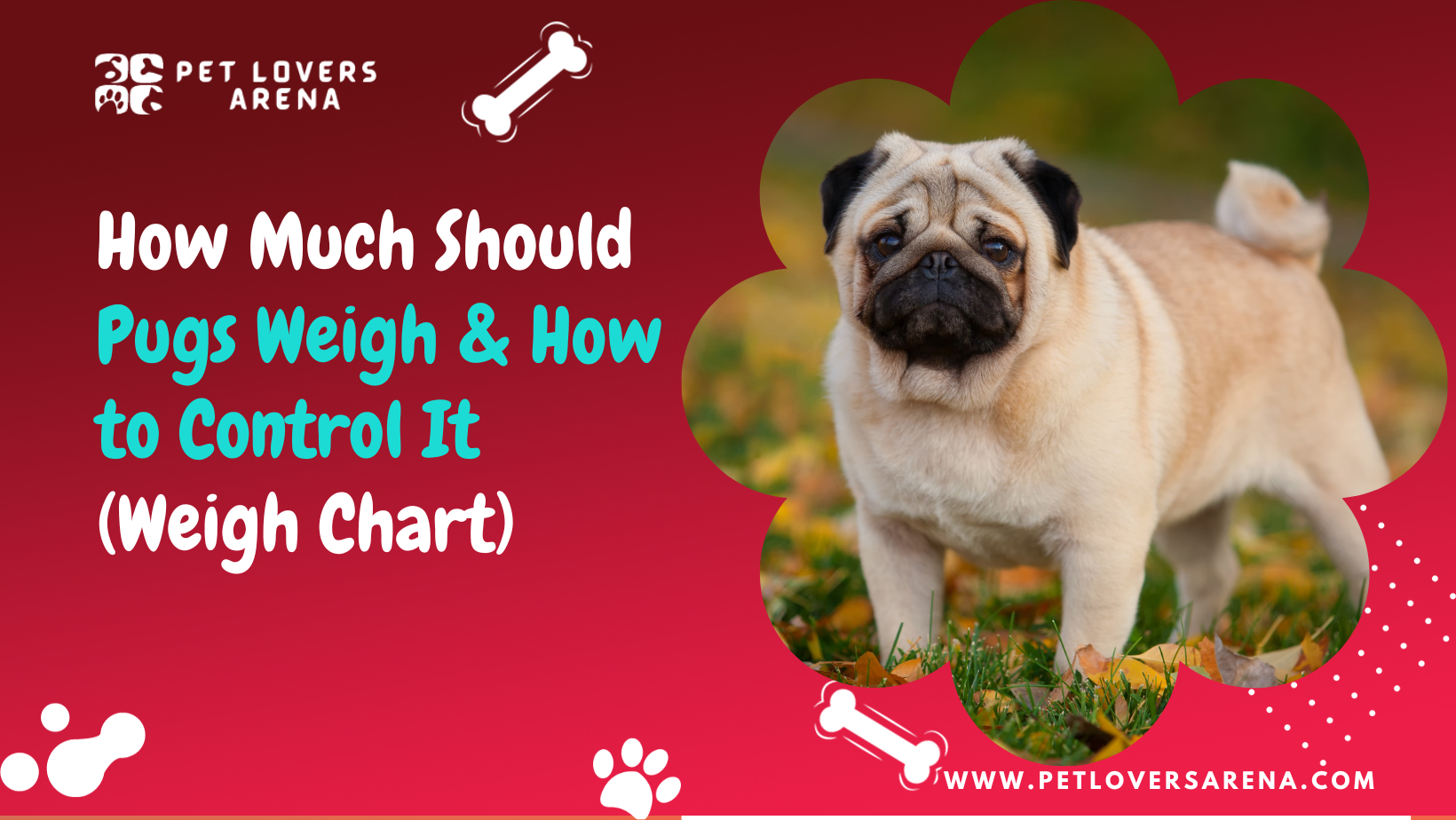Pugs are affectionate, attractive dogs who can be easily accommodated into small spaces owing to their tiny appearance. They are cute and adorable, yet their predisposition to several hereditary health issues makes it difficult for the dog’s parents to take care of them.
Many dog parents have noted that Pugs are prone to conditions like cancer, kneecap dislocation, and skin irritation because of the folds in their skin. The central concern is mostly seen associated with their weight.
Dog parents often struggle with the health of their pugs, but if they can focus on maintaining their pug’s weight properly, they will not have to worry about bigger concerns.
One of the best ways to manage their weight organically is to introduce them to a calorie-restricted diet early on and inculcate the habit of engaging in some form of physical activity.
Also Read: Crusty Scabs Around Dog’s Mouth: Causes & Remedies
How Much Should Pugs Weigh?
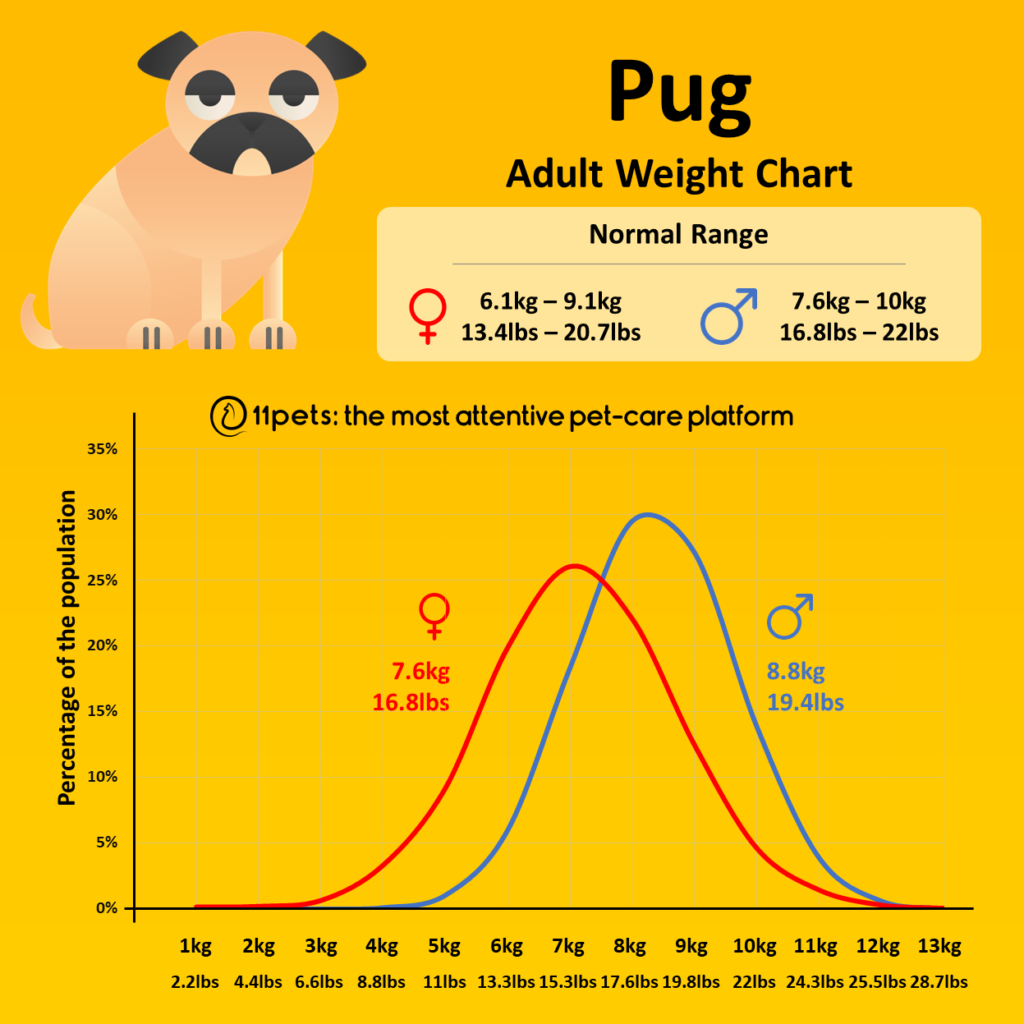
If you have a puppy approximately six months old, it should weigh around 7 to 12 pounds. Along with their weight, you should find that their height is typically about 10 to 13 inches. This is the time when they have almost attained their adult height.
By the time they are nine months old, they begin to fill out and may do so up until the age of one. Your pug is still developing if they are less than nine months old.
They are probably still growing if their paws appear out of proportion to their legs and bodies. This is a typical puppy characteristic that denotes the need for more development.
Based on their parents, your breeder should be able to give you a more exact estimate of your pug’s eventual size. This will also give you an estimate of the puppy’s maximal size because puppies seldom grow to be bigger than their larger father.
A Pug stands 10 to 13 inches tall and weighs about 14 and 18 pounds on reaching complete adulthood. Instead of being skinny and slim, a fully developed Pug will look compact and solid.
A Pug in good health will weigh less than it did when they were younger. Therefore, you should keep an eye on their nutrition and activity at this stage of life to support their continued health.
Contact your veterinarian to see if your pug is gaining too much weight if it continues to gain after 18 pounds. Despite being the most prevalent and avoidable illness in dogs, obesity affects 25% to 30% of all canines in the general population.
Male Pugs tend to be a little taller and more comprehensive than females. This is normal. However, it has been reported that specific male Pugs may weigh up to 20–22 pounds, which may still be considered healthy.
We developed the weight distribution chart for Pugs in real life by examining hundreds of data points. A typical female weighs between 6.1 and 9.1 kilograms, and a typical male weighs between 7.6 and 10 kilograms—precisely, 16.8 pounds to 22 lbs for males and 13.4 lbs to 20.7 lbs for females.
How to Control a Pug’s Weight?
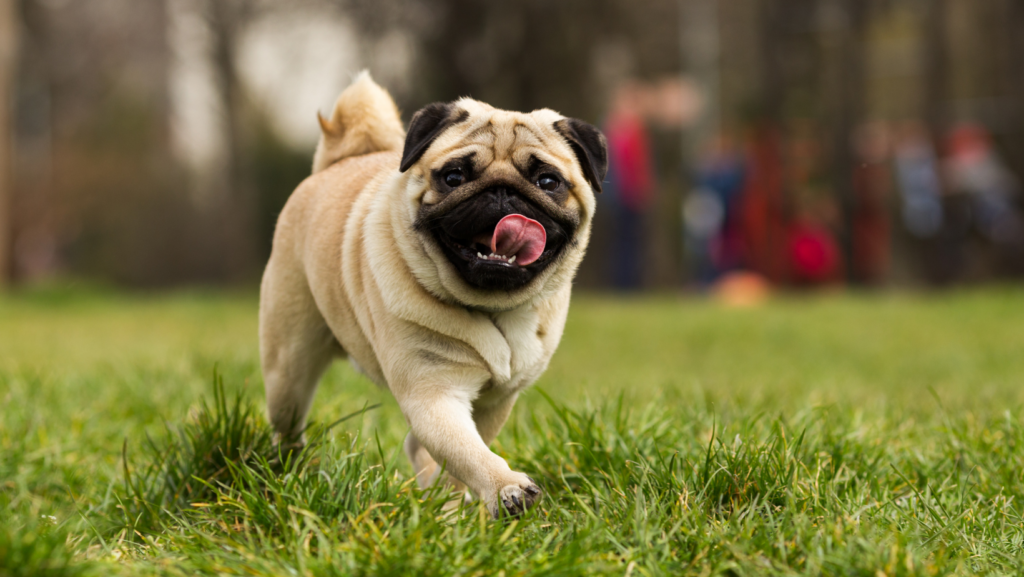
An overweight or obese pug is not a desirable pet for any pet owner. So let’s look at some easy steps to control your pug’s weight.
1. Feed your dog homemade food
You can make homemade food using fresh vegetables and fruits to ensure that your pug gets its regular amount of food. However, unlike homemade food, readymade available at pet stores often has grains as fillers, preservatives, and chemicals, in addition to a substantial amount of fiber and starch.
In fact, commercial food often has less amount of protein. So, to help your pug lose weight, decrease the number of carbs and fiber. In addition, homemade food will reduce their frequent hunger and help them lose weight.
2. Manage your pug’s hunger
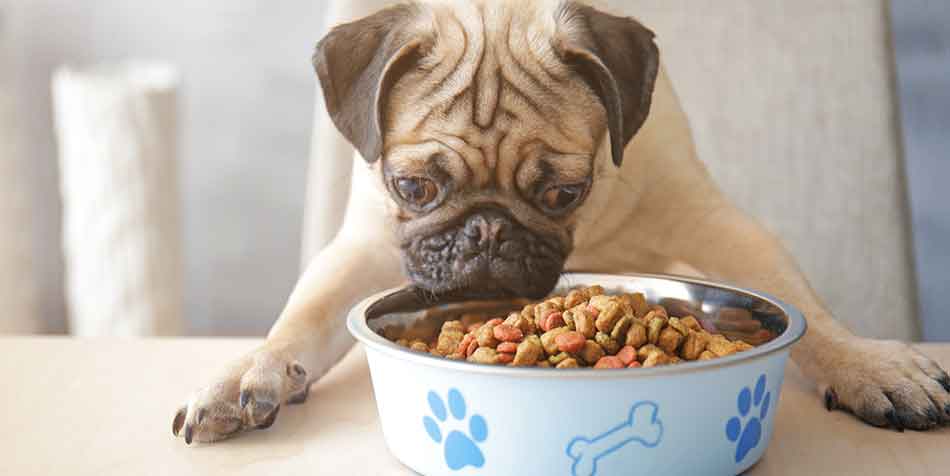
Pugs are always healthy, and managing their hunger can be tricky. Some simple ways to do this is by frequently feeding them, but reducing the quantity of food, adding veggies and fruits to their food bowl, and distracting it with some toys when throwing tantrums about being hungry.
3. Get them regular exercise
Irrespective of the dog breed, exercise is one of the easiest ways to make them lose weight. Unfortunately, pugs are not meant for vigorous exercise, as it can affect their breathing.
But a modest amount of exercise will benefit your pug for sure. So take them for walks every day or go to dog parks and play games like fetch and frisbee. But ensure that they are not breathing heavily due to exercise.
Keep a record of their weight loss, this will help you to determine the future course of action. If there are no improvements despite taking all the steps mentioned above, you can consult the vet to crosscheck if your dog is suffering from some physical condition that is making it hard to lose weight.
4. Let your pug be on a diet
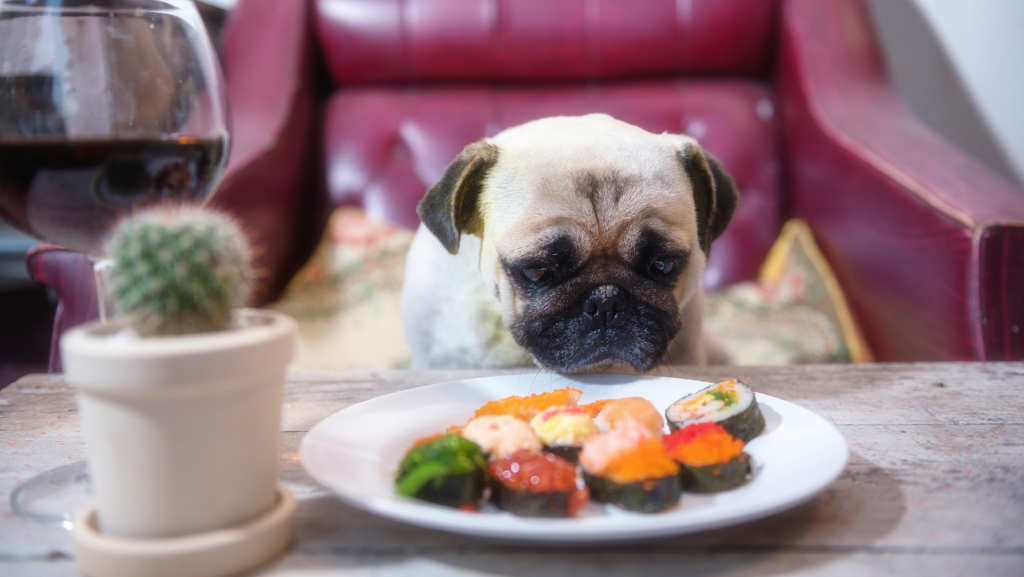
Putting a pug on a diet is no easy task, but it will help them in the long run. While pugs are voracious eaters, controlling the amount of food intake will help them lose some pounds.
Begin by increasing the number of meals but reduce the quantity of food in each meal. Besides, add more leafy vegetables and fruits to its daily meals.
5. Take help from the vet
While it is not always possible to visit vets for weight loss programs, if required, do so. Vets can better advise you about your dog’s diet or some dog food that may help them lose weight.
Besides, they will also be able to determine if any underlying health issues make your dog overweight.
Why Do Pugs Gain Weight?
Mostly, pugs grain weight due to sedentary lifestyle. Most dog parents are busy, and pugs don’t get a regular amount of exercise. Besides, pugs tend to overeat, and if this issue is not addressed on time, they can get overweight.
Besides, unsuitable dog foods with a lot of carbs can also cause your pugs to gain weight since they are not meant for heavy exercise.
Also, they are quite likely to gain weight. Therefore it’s important to control what they eat regularly.
Brachycephalic condition, sometimes known as the “flat nose syndrome,” is among the most serious health issues.
Pugs with the brachycephalic syndrome have more respiratory problems because it makes it difficult for them to breathe with their nose. Pugs’ impaired breathing makes them particularly prone to heatstroke.
Maintaining a healthy weight is essential to reduce the impacts of brachycephalic syndrome. In addition, surgery can be required in extreme situations to treat enlarged soft palates or restricted nostrils.
Pugs require extra care in terms of eating habits because of their propensity for overeating and begging for table scraps. To ensure that your Pug puppy is not acquiring too much weight, which might be hazardous to their joints and internal organs, it is essential to see your veterinarian if they are growing faster than these estimations.
The best thing is to seek professional help as many health problems can be easily avoided with the help of your veterinary expert, preventative care practices, including physical examinations and x-rays, and preventive care measures. In addition, to keep your pug active and living their best life, maintain a healthy lifestyle, including daily exercise and a balanced diet.
You can quickly determine your pug’s weight is to checking its ribcage. If your pug is a healthy weight, its ribs should be easy to feel but not visible, and typically, they should have only a thin layer of fat covering them.
The same is true with their spine, so if you can see their spine, it indicates that they are too thin, but a healthy Pug’s spine should be easy to feel because a thin layer of fat should ideally only cover it.
Why is it Important to Maintain a Dog’s Weight?
You need to maintain your dog’s weight to help it remain healthy and hale. Besides, maintaining a dog’s weight saves them from various diseases, like blood sugar and heart diseases, which can otherwise affect their quality of life.
Besides, if you are planning to breed puppies from your dogs, you must focus on that their parents do not suffer from issues like obesity.
How Do I know if My Pug is Overweight?
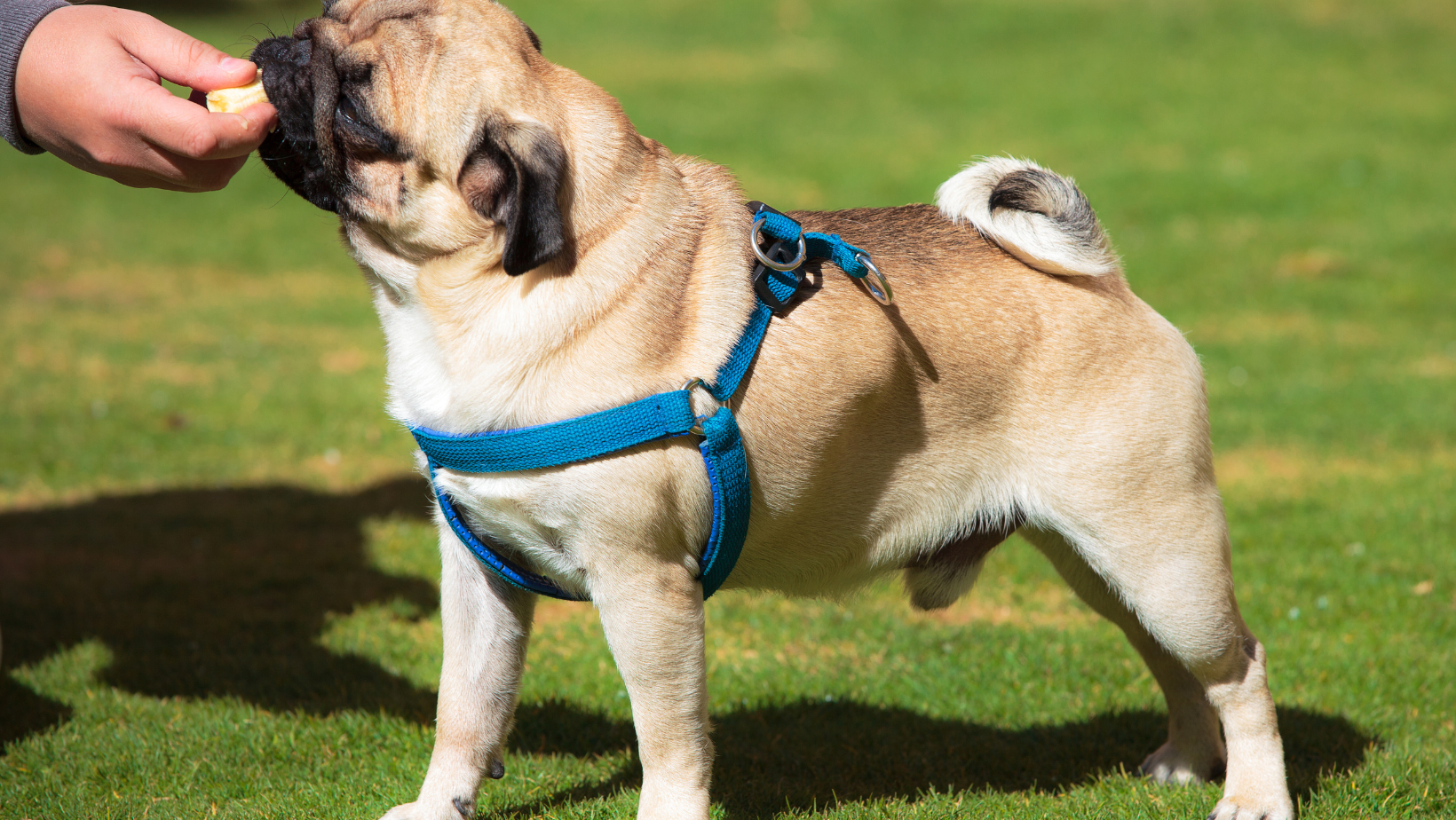
If you are wondering about a correct answer to this question, you can take delight in knowing that there, in fact, is a scientific way to know the right weight for your pug.
You can look at the weight chart provided by the Cambridge BOAS research group that works on visually representing the weight of your pug.
It uses body condition scores or BCS to evaluate if your pug is obese or not, with BCS 3 being indicative of a pug who is too thin and BCS 9 for obese pugs.
Can Sugar Make My Pug Gain Weight?
Yes, sugar not only increases the weight of your pug, but also causes many other health complications. You must have heard people saying no to offering sugar to dogs, especially refined sugar or anything prepared with it.
There are several problems that your pet may have to undergo because of sugar or excessive sugar intake. Sugar intake has often been seen as associated with stomach issues in dogs, and it can be diarrhea or vomiting.
Doubtless, feeding your dog sugar treats will negatively impact their teeth, and soon you will find them struggling with cavities.
Should I Stop Giving My Pet Dog Sugar Treats Due to Weight Gain?
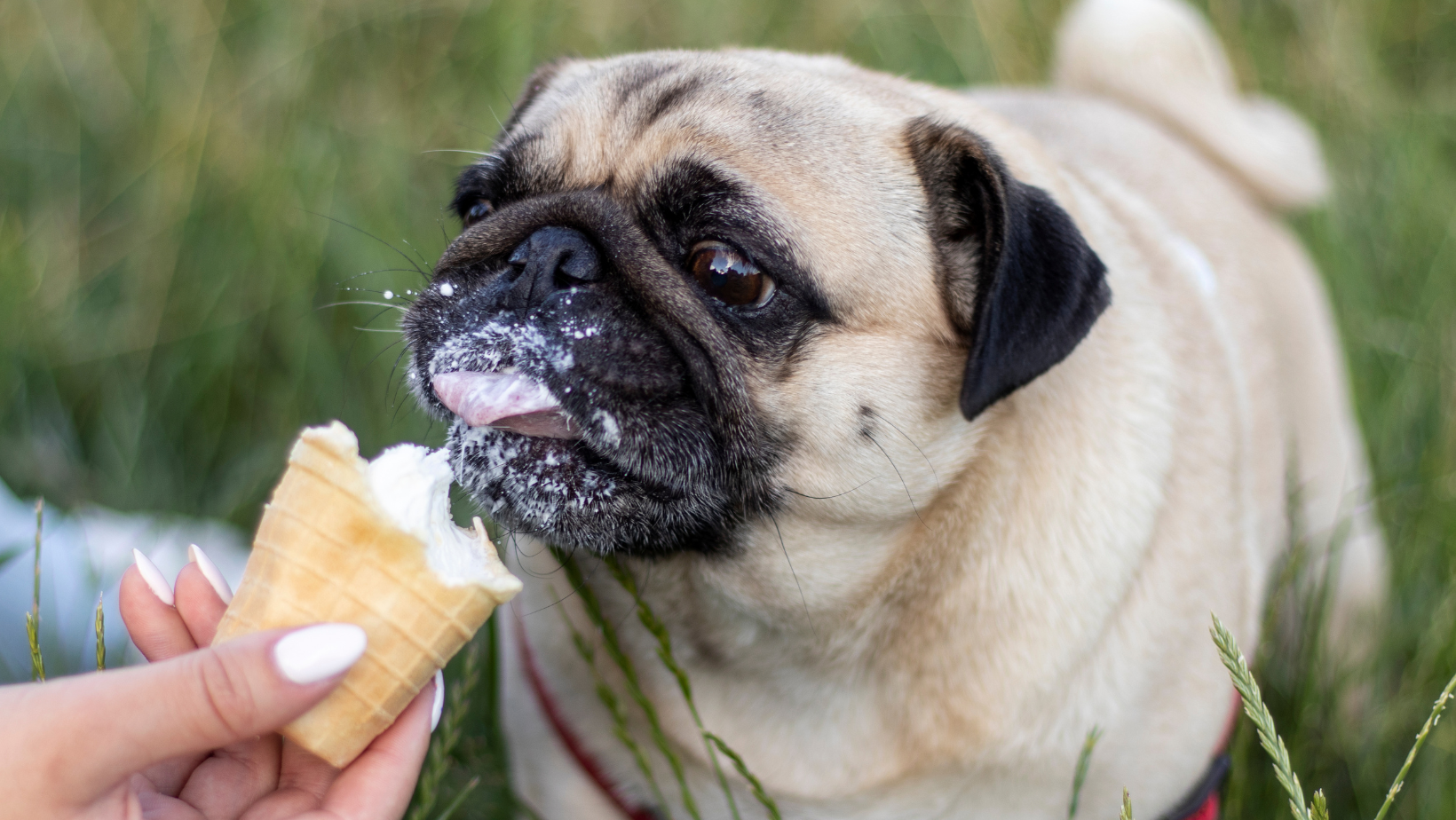
Apart from this, there is always a fear of weight gain, which can be a cause of concern as it can have long-term repercussions.
It can lead to serious metabolic changes caused by increased secretion of insulin. Which directly impacts your dog’s energy levels, and the cyclical process of gaining weight continues.
This cyclical process can further aggravate your dog’s health issues by increasing the chances of developing Type II diabetes in most cases.
All these issues point out two things: sugar can make your pug gain weight, and if so is the case, they will have to deal with many more health issues that can affect them in the long run.
Conclusion
Dogs can be easily trained to do good things for their health. Dog parents can make an extra effort and gain awareness of what is suitable for their pets and what is not.
Understanding the consequences of excess sugar intake, dog parents should keep their pets away from sugar treats as much as possible.
They can make it a habit to go through the ingredient list before making any purchase for their furry friend. This will keep them posted on what their dog is consuming and allow them to better monitor their pet’s health.
Meet Fabian Wright, our guide into the animal realm at PetLoversArena.com. Having served as an Animal Care Specialist for the Ruwenzori Team at the Kansas City Zoo, he prioritizes conserving exotic species by replicating their habitats. Fabian aspires to share captivating stories of creatures, big and small, through PetLoversArena.com.

